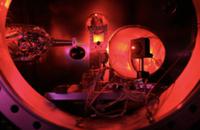 The advent of the world’s first hard
x-ray free-electron laser (FEL) – the Linac Coherent Light Source free-electron
laser at SLAC – in one step in 2009 increased the spectral brightness of x-ray
sources on Earth by a factor of a billion. Spatially coherent, monochromatic,
femtosecond X-ray pulses can now be routinely produced over a wide spectral
range, enabling simultaneous access to the spatial and temporal scales of
atomic processes for the first time. These advances are enabling fascinating
new developments in fields as diverse as x-ray diffraction imaging of
biological systems, nonlinear x-ray optics and the investigation of matter in
extreme conditions of temperature and density relevant to astrophysical and
inertial confinement fusion. In this talk I'll give an overview of some of the
most important work done to date on x-ray FELs, and speculate on future
research directions and opportunities.
The advent of the world’s first hard
x-ray free-electron laser (FEL) – the Linac Coherent Light Source free-electron
laser at SLAC – in one step in 2009 increased the spectral brightness of x-ray
sources on Earth by a factor of a billion. Spatially coherent, monochromatic,
femtosecond X-ray pulses can now be routinely produced over a wide spectral
range, enabling simultaneous access to the spatial and temporal scales of
atomic processes for the first time. These advances are enabling fascinating
new developments in fields as diverse as x-ray diffraction imaging of
biological systems, nonlinear x-ray optics and the investigation of matter in
extreme conditions of temperature and density relevant to astrophysical and
inertial confinement fusion. In this talk I'll give an overview of some of the
most important work done to date on x-ray FELs, and speculate on future
research directions and opportunities.

